-
Content Count
1,358 -
Joined
-
Last visited
Content Type
Profiles
Forums
Calendar
Posts posted by TriumphV8
-
-
Look for Neil Ferguson.
And if I may give you a hint, it is essential to get rid of any play between
spindle and throttle body.
At CP otherwise, when opening of plates starts, the spindle lever does not rotate
to open the plates but the whole spindle is lifted. This ends with a bad sync.
The best new ball joints will not perform well if the thrpttle spindles have play and the
supporting shaft underneath in the three rubber bearings.
-
From my understanding the PRV releases the fuel what is not needed via a pipe
back to the tank or into the fuel filter what ever is routed. Also the metering unit
releases a little bit of leaking fuel back by a pipe back to the tank.
Both pipeworks should nowhere be under fuel pressure.
I wonder if I understood something wrong or there is something blocked in the pipework.
As at the front the leaking fule is only isolated by a "Simmering" to the oiled area I would
check what is going on there. Fuel pressure to let a rubber hose drop should not be there.
-
With no doubt the rear life axle suffers from bad mounting points.
The more power the car has the worse ist becomes.
On acceleration the rear lowers down and rests on the rubber bump stops.
That gives a crazy feeling when under accel a little bump is crossed.
I had the rear with hard race springs what gives a proper road holding and keeps
the rear up under acceleration. Anyway that is not the best for daily use because riding comfort suffers badly.
Under these configuration the rear ARB is not necessary.
I went back to springs only a little bit harder than original and with that the ARB
reduces rolling. What is best depends a little bit on the tires in use. The lower
the tires, from /70 and less the more it helps that wheels are rectangular to the ground.
So if you are on /70 or /65 tires and do not set camber very negative and springs are soft
the roll bars front and rear are a good choice. They should be set that the understeer ex works
of the TR6 is reduced what means something should be done at the rear.
Bugatti went opposite way with positive camber and let the car roll. But at these days the
cars had bicycle tires that like that. No hard shoulders and very small and round at the contact area.
Todays tires are different, they are made stiffer and wider and have a flat contact area.
-
It is a simple geometric problem: If you put the damper 50% forward to the turning point
you have to increase the damping force by 100% for the same result.
What stresses the rear part of the axle area now adds double the force to the front area where
the spring is located. Although a very good idea just from the geometry and space for anti roll bar
it is not good for a stock TR without some reinfocement.
I love that type3 shock arm arrangement through the trunk and have that for many years in use.
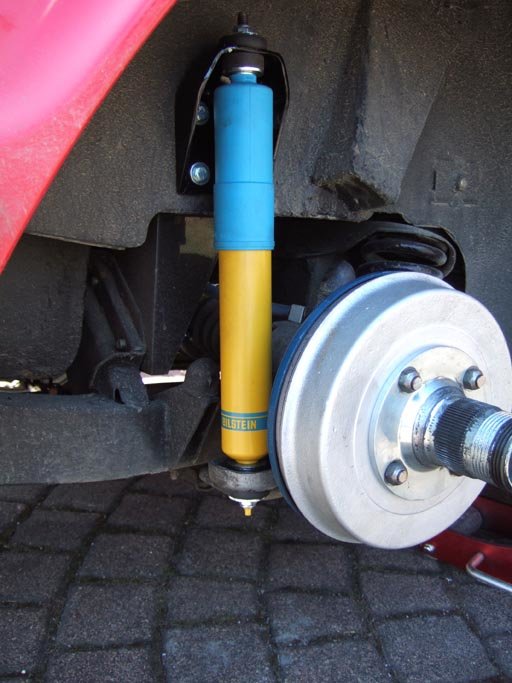
-
Buy a Gunsons Trakrite and set the wheels properly.
That is a really good help to get things in limits for our cars.
Also a digital scale used on a flat ground is perfect to set camber.
-
2 hours ago, Kevo_6 said:
Always fancied a snazzy rocker box but as I understand it is there isn’t/wasn’t a baffle plate across the vent tube as in the original, I believe some have glued a plate across it. I think without the plate it can cause extra oil misting inside the air plenum.
Of course I could be completely wrong and I would be interested if this is an issue.
I am dealing with that but too lazy to lift the cover.
Also the tiny little hole in the cap is crazy.
Did not expect a problem but after 2000 miles last week
the engine was well oiled all over.......
Needs not much, not even half a litre was missing, but if spoiled at
the right places it is all over dirty, including the air filter droping.
-
2 hours ago, Hawk said:
Unless I am being daft (always a viable option!), there no longer appears to be a home for general (non model specific) help / discussion - and so I'm going to ask in here.
I have an electrical issue that I have been unable to trace that results in an intermittent blowing of the fuse linked to lights, OD etc.
Can anyone recommend a decent garage and / or auto electrician in the Warwick area?
Unfortunately this is in more than 50% related to a cut but not properly stored cable
or a hurt isolation somewhere that rubs at the metal around from time to time.
I would expect the specialist to search quite a long and expensive time if
not easily to be seen.
For example the J-OD in the old frame requires an adaptor that makes things pretty
tight and the cable shoe is close to the frame and in a corner it meets the metal
causing a short cut........
So take care not to spend a fortune on a hurt cable that you might detect with same effort
by yourself but much cheaper. It needs no electrical skills but good eyes to find the culprit.
-
Jochem you can pick a set of new finned drums at next visit
where I made an adaptor to center it in the lathe
and they are drilled out a little bit to have them perfectly round....
-
20 hours ago, JochemsTR said:
+1 Worked for me....thanks Andreas
Jochem
Easiest solutions often work nice :-)
Another interesting test for you:
Make a trigger connection of the EFI via the distributor.
You will now get the whole delay in triggering from chain and these toothed gears.
Also some delay in the electronics might occure.....
You can watch that by setting a fixed timing in the EFI and strobe the pulley.
My engine made a delay of about 4 degrees on higher revs.
Whereever it comes from, it is interesting to see....
-
Never calculated, HOWE recommended a 0.75"
so we kept what we had.
The fun started after fitment. As you found out we will
also fit the 0.625" master because we have more travel than needed.
I think than all possible has been done in this area.
We will also have to examine the pressure plates. The MF215
Sachs for Volvo can be obtained in two versions for different
engines, one smaller, one bigger.
Maybe a stock carb TR6 will work properly with the softer pressure plate.
-
-
I had the OPEL CORSA diesel alternator in use that can be obtained with a
vaccuum pump for the brake booster. Not an easy job because the pump
needs oil to work and the pumped air mus be guided back to the engine sump.
I was on a 290 degree Kent cam and the difference was noticeable.
It is not that the car does not brake, the problem is that the switch between modern daily driver
with ABS brake and big booster makes such a huge difference to feel unsafe.
Right now I am on the double 9" disphragm booster from Volvo. That gives
pressure forces like a modern car.
Swapping to a strange brake pad at the front is not recommended. The front might brake
more but the rear is not affectetd by that, it will brake less than needed. So the result is a
bad brake balance that under dangerous conditions will not give the shortest way to stop.
-
Hi Marco, the pressure forces dropped a little bit
referring to the old but nice working clutch but not
that much we expected.
For a TR6 clutch it is easy to press but not more.
-
Very nice work!
I keep fingers crossed that it will work as good as it looks
but I am sure with all that measurement and calculation
it will be perfect!
Ours did not so. Pressure forces wil require the 0.625" master where we actually deal with 0.7"
and the bearing has a point where it gives a ugly howling when it meets the pressure plate.
Hopefully it will give that up after running in........
The feeling of the clutch engaging point is wonderfull, rest needs some more work.
-
The pedestal must be fully torqued like later in use.
It should not be removed and bolted again without test
because the gaskets get compressed each time.
Add a screwdriver in the slit for the distributor and turn.
That lets the gear move up and down.
-
I never understood the hype for the KONI.
There is a huge difference between their "normal" street dampers
and the famous KONI race dampers.
KONIs have two tubes, inside the pretty small tube sits another even smaller tube what is the damper.
From that reason the KONI can carry only one real valve in the piston. There is not enough space.
And this valve also is a bit small for the purpose. Big valves provide riding comfort at heavy bumps
because they open and release the oil more quickly allowing the strut to fly into the damper. As
it is the rebound valve that is not such a strong problem.
The bounce valve is at the bottom and more or less only a orifice without springs.
So the KONIs mostly work on rebound. That has the disadvantage that with several bumps
following the spring compresses and the car lowers. The bump stops are hit and springs get hard
what is bad for riding comfort.
So from my understanding the Koni should not be combined with lowered springs and if
they should be pretty open, not closed.
I can say that a modern BILSTEIN or SACHS can do much more referring to riding comfort plus roadholding.
The car rides more comfortable on bumps than with stock levers and keeps the car strong on the road without
moving and making motion by itself when driven fast.
I would recommend to mark the bump stops front and rear, drive and check if the stops are hit
under normal driving. If so I would add spacers under the springs or better aim for springs
that are not lowering the car that much and are not too hard because that robs riding comfort.
-
Not much remains:
Gasket between block and front plate or
gasket between block and pickup tube
or pickup tube broken.
My bet is on the flange of the pickup tube,
very easy to bend.
Why not swap to the crank driven oil pump?
There is an intermediate cover to have that and distributor on board.
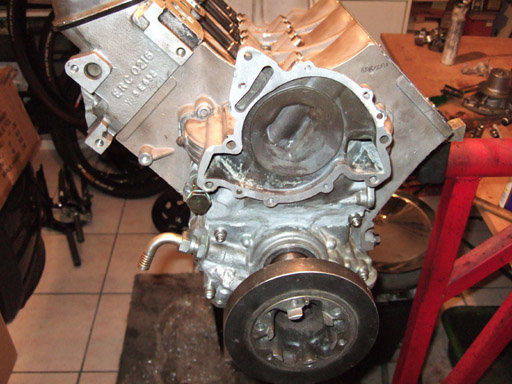
This is a crank driven oil pump at the bottom and the old clockwise rotating water pump at the top.
-
Yes, pretty much the same except mine has three bolts, yours six....
Must be the correct solution. :-)
-
Balancing the pulley shows the step for the trigger wheel.
Mine is from http://trigger-wheels.com/store/contents/en-uk/p5.html
Wheel is opened up on the lathe to meet the step on the pulley.
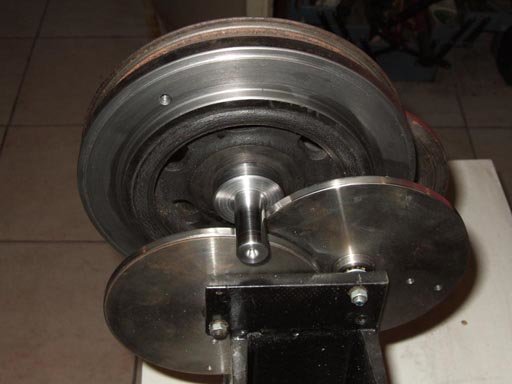
-
Unfortunately I lost the pictures of that modification.
Maybe Jochem will ad some pictures with that solution.
After removing the material from the bodies also the surface for the bolt
holes must be set deeper and none of the holes can be used for taking
off the air pressure for the ECU and manifold pressure for the booster.
The bigger injectors have the simple disadvantage that they need short
times at idle and small load. As we are in the range of 3 milliseconds any
influence from voltage or anything else becomes more relevant and the
metering is not that precise.
From that reason it became a rule that under full load the injectors should have
the size that they are permanently open with a small reserve.
-
If you fit the original external feed kit the oil pressure drops less than 0.5 bars.
From that view I think that is acceptable.
What I found out is that a huge splash of oil pops out of the rocker gallery just
where there is a small space. It has nothing to do with improved oiling but a huge
waste of oil. From that point I would not recommend to do so.
I tried the 0.8mm orifice.
With that the pressure drop can not be recognized.
Two questions remain: Is that necessary at all and what happens
to the oil suction through the valve guides.
Without the valve caps the oil drops into the inlet and build a huge
amount of coal on the inlet valve.
So with a oil splash in the head the valve caps are necessary and not
only the rubber rings fitted on the valve stems.
What nobody took into account is to increase the flat spot on the cam!
Maybe that wrong size or position is the reason for Jochems oil problem. The spot
does the metering by making at each revolution a connection between oilfeed and
piping to the head. Either the flat spot can be increased or an additional spot can be
grind into the cam at 180 degree.
I would check position and size of the flat spot first before fitting the external oil feed.
How to do so?
I would take the oil pump drive out and make an external drive with an Accu driller.
Now the engine can be turned slowly by hand to expect a position where the oil pops
out of the feed hole in the cylinder head.
If there no position can be found where the oil pops out there is something wrong with
the position of the two holes or flat spot on cam.
If oil pops out the spot is too small and that should be corrected with next cam swap.
-
Despite this opinion I am on the smaller type because I lost
two of the HG loints by braking of the cups.
https://www.landroverexpedition.com/articles/universal-joint-differences/
-
That is correct, normally the marks should only occur on the driveshafts.
That was the reason for me to step back to the original design with shorter needles.
If really needed on the propshaft I would have made another attempt with the
heavy duty joint with the longer needles.
-
Marks on the inner part of UJ are pretty normal with high torque
that was applied to the axle. This makes it more common on the
driveshaft than on the propshaft.
Either you have a high performance engine or tend to accelerate hard in low gears.
The reason is that the needles loose their rectangular position under heavy load and so
at the tips of the inner part a point load is created instead of a line load when
needles are in correct position.
Had a discussion with a specialist at a fair. He told me they made special caged joints
what dropped the amount of needles in the joint but due to fixed angle of needles over
all gave better results.
The solution is the CV-jointed axle.
I tried the UJs with the longer needles but lost some of them. Revington
offered new propshafts with these UJs but there the oute cups broke two times
and I stepped back to GKNs TVC joint with smaller inner part, not the heavy duty one.
The marks on the inner parts have nothing to do with lubrication.


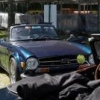
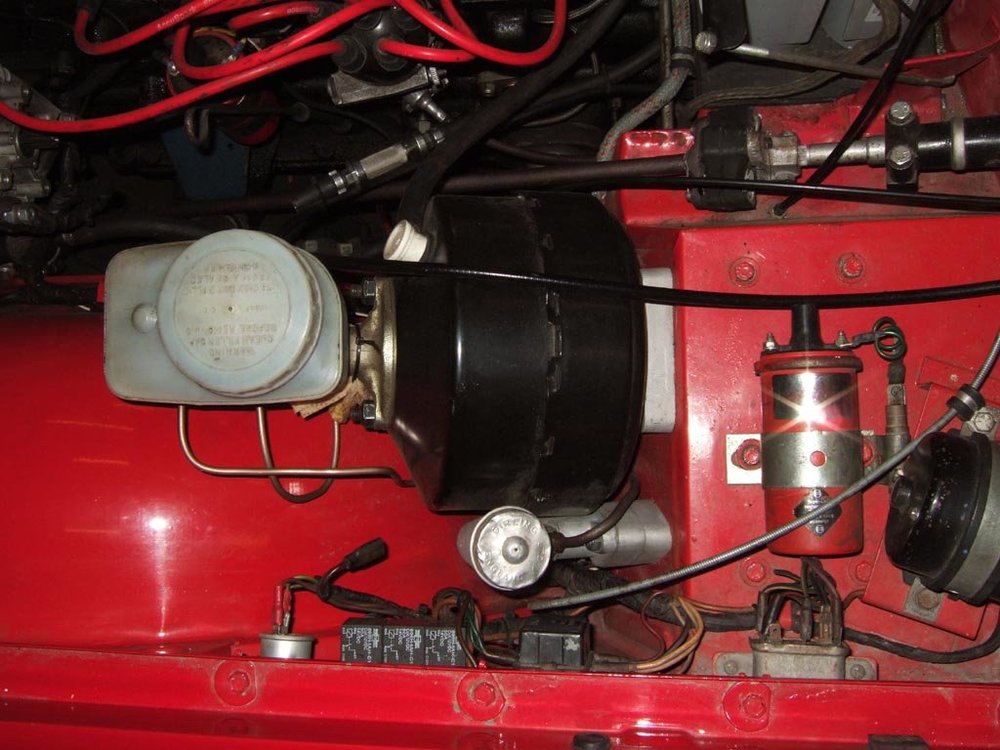
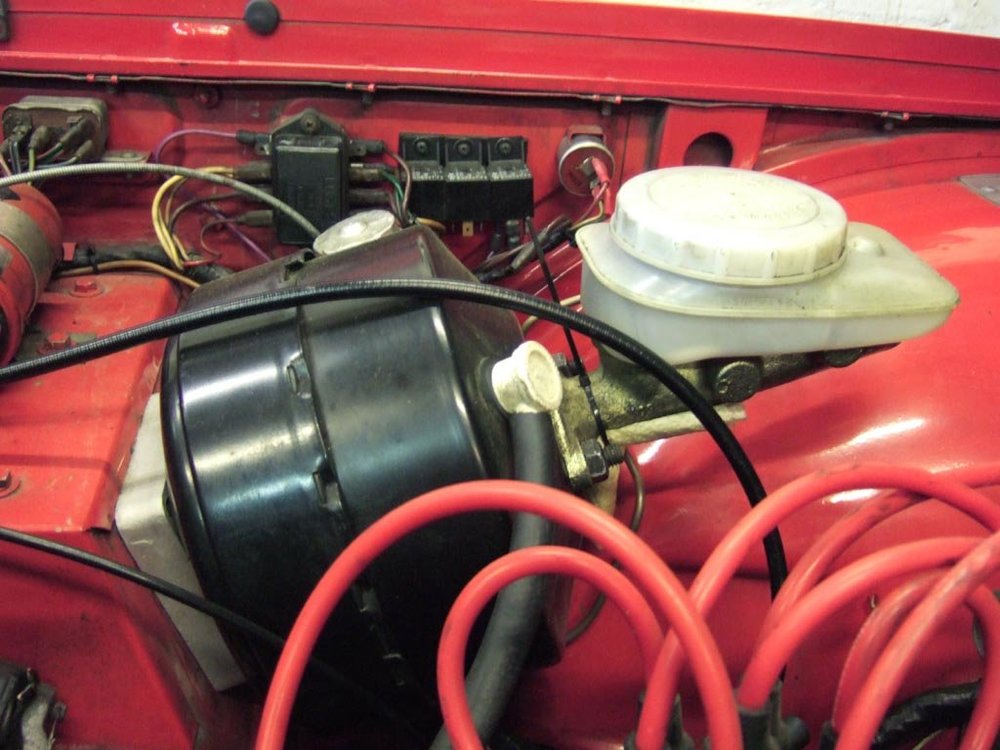
Electronic Ignition
in TR6 Forum
Posted
The ignition has been a weak point of engines all the time.
But we can be happy that all the theoretically not perfect solutions to bring a spark
to the correct cylinder ended with a close to perfect result referring to power and misfire.
Todays solution would be a crank triggered digitally prepared pulse of defined timing
and dwell time guided to a single coil for every cylinder to perform a powefull spark at
any rev and any load situation.
It is up to anybodys individual taste how much a Triumph owner wants to go that way away
from points. It is not needed for normal running of engine. If there is a problem it can be solved
with a repair of the original.
Replacing the points with an electronic item is a good idea but everybody should be aware that electronic
parts do not like heat. So this and all the next steps like 123 should be seen a bit critically. I would carry a
conventional distributor with me.
My personal view is on the dwell time because I have a high reving TR6 that needs a high spark rate at the limit
of the ignition system fitted. High tension coils need a time to build up a magnetic field to perform a powerfull
spark. That is called the dwell time and is from 2-10 milliseconds depending on the coil.
Both points and cheap electronics perform a dwell angle turning from the crank what becomes smaller when
crank rotates faster. That is not good and should be superseeded by a constant dwell time meeting the requirements
of the coil. It avoids overheating of coil at low revs and poor spark at high revs.
Single coils avoid distributor and all the parts that can fail and as the only deliver 1/3 of the former spark rate
they have no problems to deliver at high revs.
So it is more a personal taste how far to go with swap and not a single way that only will be the best. Many swaps
reported to give a new engine are simply related to a former rotten dizzy!
I have a full digital crank triggered ignition with a MSD6 multiple spark discharge.
I run this for 20 years at the V8 and 8 years on the 6 cylinder. Electronics is far away
from heat in the glove box and spare was never needed.